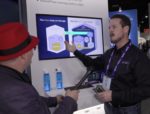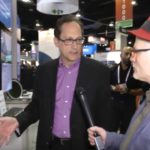Arm and the U.S. Defense Advanced Research Projects Agency (DARPA) have announced a three-year partnership agreement to “enable the research community that supports DARPA’s programs to quickly and easily take advantage of Arm’s leading IP, tools and support, accelerating innovation in a variety of fields.” Under the auspices of DARPA’s Electronics Resurgence Initiative, the agreement establishes […]
Arm-Powered Fujitsu Supercomputer to fuel Aerospace Research at JAXA in Japan
Today Fujitsu announced that it has received an order for a supercomputer system from the Japan Aerospace Exploration Agency (JAXA). Powered by the Arm-based A64FX processor, the system will contribute in improving the international competitiveness of aerospace research, as it will be widely used as the basis for JAXA’s high performance computing. “Scheduled to start operation in October 2020, the new computing system for large-scale numerical simulation, composed of Fujitsu Supercomputer PRIMEHPC FX1000, is expected to have a theoretical computational performance of 19.4 petaflops, which is approximately 5.5 times that of the current system.”
Video: State of ARM-based HPC
In this video, Paul Isaacs from Linaro presents: State of ARM-based HPC. “This talk provides an overview of applications and infrastructure services successfully ported to Aarch64 and benefiting from scale. “With its debut on the TOP500, the 125,000-core Astra supercomputer at New Mexico’s Sandia Labs uses Cavium ThunderX2 chips to mark Arm’s entry into the petascale world. In Japan, the Fujitsu A64FX Arm-based CPU in the pending Fugaku supercomputer has been optimized to achieve high-level, real-world application performance, anticipating up to one hundred times the application execution performance of the K computer.”
NGD Systems Steps up with Arm Processors on SSDs at SC19
In this video from the Arm booth at SC19, Scott Shadley from NGD Systems describes the company’s innovative computational storage technology. “In a nutshell, Computational Storage is an IT architecture where data is processed at the storage device level to reduce the amount of data that has to move between the storage and compute planes. As such, the technology provides a faster and more efficient means to address the unique challenges of our data-heavy world – satisfying reduced excess bandwidth and providing very low latency response times by reducing data movement and allowing response for analytics as much as 20 to 40-times faster.”
What to expect at SC19
In this special guest feature, Dr. Rosemary Francis gives her perspective on what to look for at SC19 conference next week in Denver. “There are always many questions circling the HPC market in the run up to Supercomputing. In 2019, the focus is even more focused on the cloud in previous years. Here are a few of the topics that could occupy your coffee queue conversations in Denver this year.”
NNSA Explorations: ARM for Supercomputing
Howard Pritchard from LANL and Simon Hammond from Sandia gave this talk at the Argonne Training Program on Extreme-Scale Computing 2019. “Sandia National Laboratories has been an active partner in leveraging our Arm-based platform since its early design, and featuring it in the deployment of the world’s largest Arm-based supercomputer, is a strategic investment for the DOE and the industry as a whole as we race toward achieving exascale computing.”
Video: Arm HPC Update from ISC 2019
In this video, Brent Gorda provides an update on the progress on Arm HPC from the ISC 2019 conference in Frankfurt. “From the perspective of Arm in HPC, it was an excellent event with several high-profile announcements that caught everyone’s attention. The Arm ecosystem was well represented with our partners visible on the show floor and around town.”
Job of the Week: Application Engineer for Arm in Austin
Arm in Austin, Texas is seeking an Application Engineer in our job of the Week. “The Applications Engineer is part of a focused professional services team part of the Development Solutions Group, that has responsibility for supporting and enabling key HPC customers and partners in their development of HPC software, using the Arm HPC Tools across various Linux/UNIX HPC platforms (Arm and other architectures). In this position, you will sharpen your HPC application expertise working on a wide range of scientific fields and environments. You will gain an excellent knowledge of Arm’s HPC development tools, alongside a deep understanding on Arm architecture and Arm IP roadmap. This position is located in the Austin Arm office. This role involves working with sensitive government customers and will involve up to 50% travel, primarily across the US.”
Catalyst UK Program Fosters Arm-based HPC Systems
“Clearly Arm will fit in as part of a broader HPC ecosystem, as we move towards systems that involve multiple chip architectures. In terms of scientific research, it may mean we run one stage of a simulation workflow on an Arm processor, while another stage is best carried out on another processor. By building a common fabric with multiple architectures on it, we can allow users to use the most appropriate hardware for each stage of their particular research problem.”
Video: Arm in HPC
Brent Gorda from ARM gave this talk at the Rice Oil & Gas Conference. “With the recent Astra system at Sandia Lab (#203 on the Top500) and HPE Catalyst project in the UK, Arm-based architectures are arriving in HPC environments. Several partners have announced or will soon announce new silicon and projects, each of which offers something different and compelling for our community. Brent will describe the driving factors and how these solutions are changing the landscape for HPC.”













